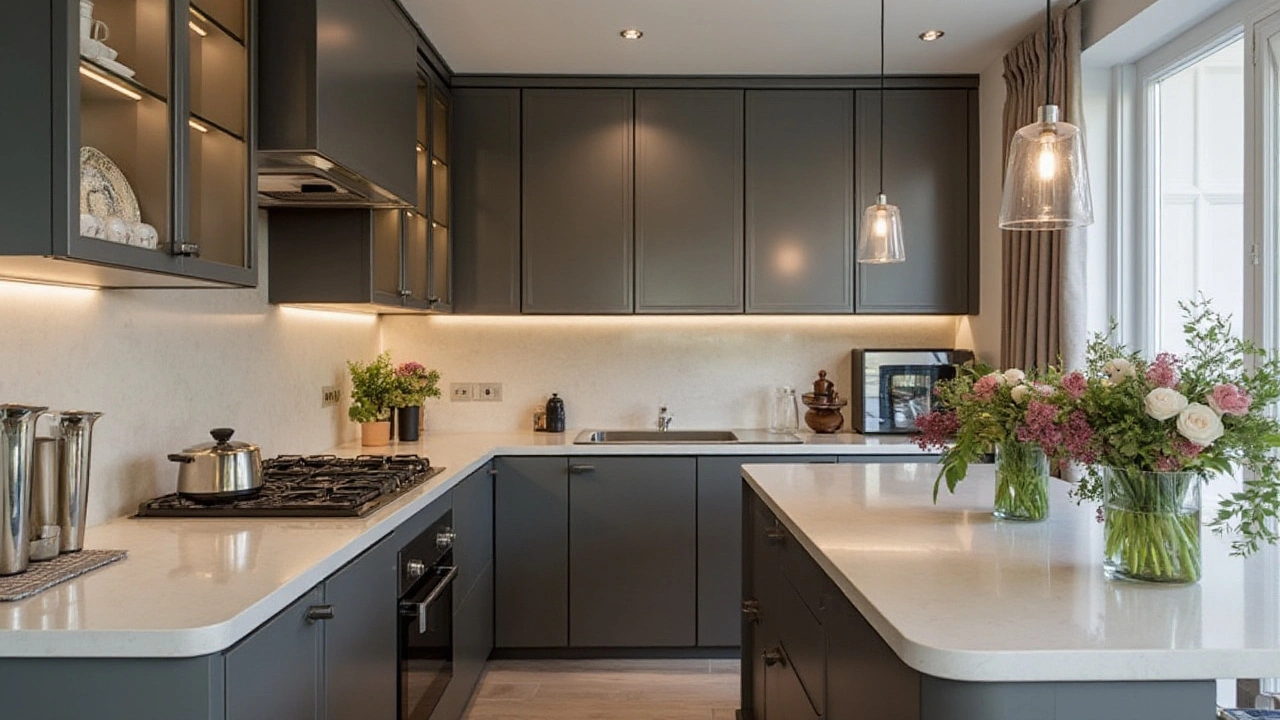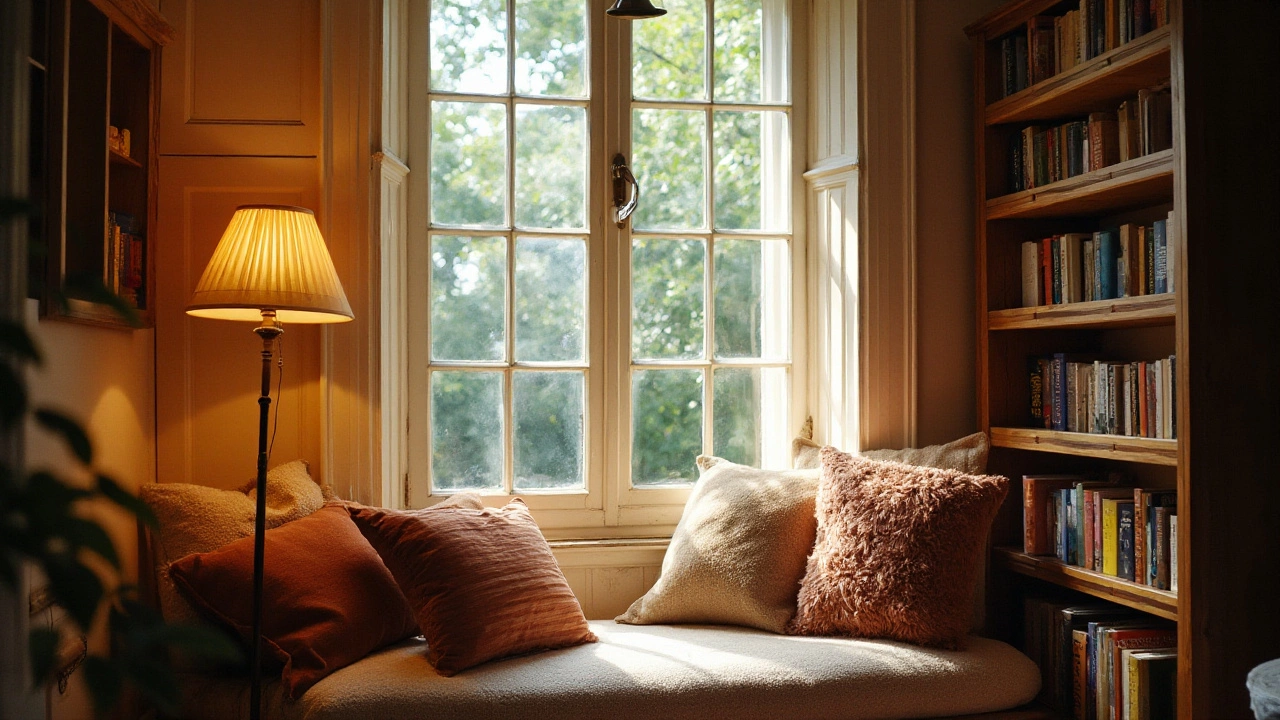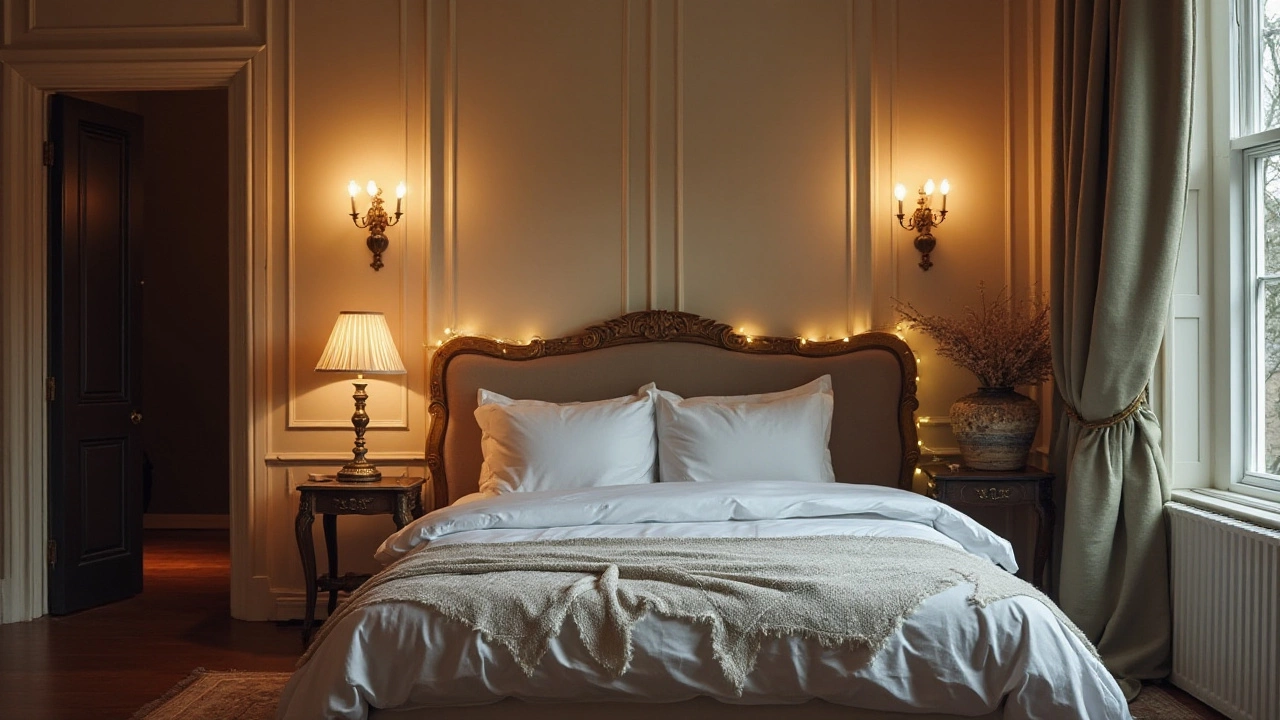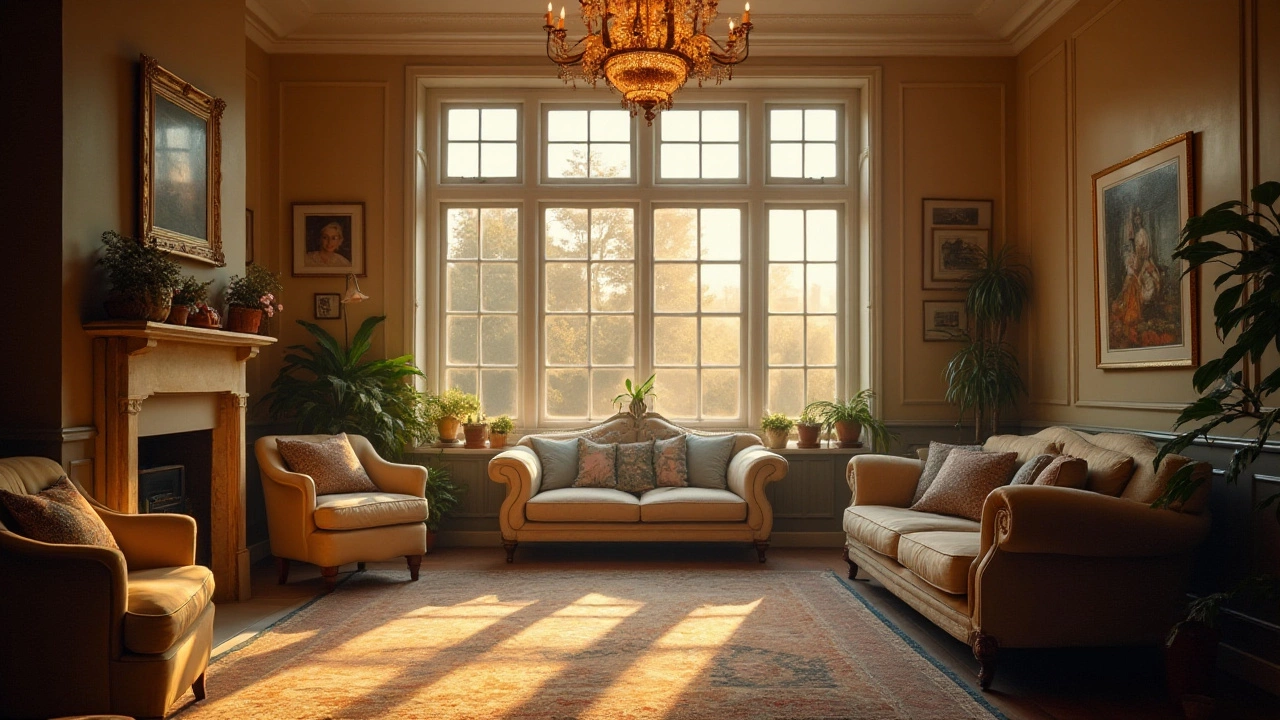Lighting in a home does much more than illuminate a space; it sets the mood, highlights features, and even affects our well-being. In today's world, where options abound, making the right lighting choice can be as overwhelming as it is important.
Understanding the role of different lights—ambient, task, and accent—and how they interact, can transform your living areas into environments you’ll love spending time in. With advances in technology, we're seeing a shift towards energy-efficient solutions like LED lights, which offer versatile and sustainable lighting options for modern homes.
In this article, you'll find insights on choosing the perfect lights tailored to each room’s purpose and style, considering everything from functionality to aesthetic comfort. Let’s illuminate the path to brighter, cozier homes.
- Ambient vs Task Lighting
- The Benefits of LED Technology
- Creating Cozy Spaces with Light
- Smart Lighting Solutions
Ambient vs Task Lighting
When considering the lighting scheme for your home, it’s crucial to understand the distinct roles of ambient lighting and task lighting. These two types of lighting serve different purposes, each contributing to the functionality and mood of a space. Ambient lighting is often referred to as general lighting; it's the primary source that illuminates an entire room. Think of it as the sunlight pouring into a room or the overhead lights that greet you when you enter a space. It's essential for creating an inviting atmosphere. Ambient lighting is designed to illuminate a room uniformly, providing enough light to avoid shadows while maintaining a warm and welcoming environment.
On the other hand, task lighting is more focused and specific. This type of lighting targets a particular area to help you perform activities that require more precision and detail, such as reading, cooking, or working at a desk. Task lighting includes table lamps, under-cabinet kitchen lights, and reading lamps among others. The goal here is to enhance visual clarity and reduce eye strain. One fascinating fact is that our light perceptions can greatly affect productivity and mood, especially in workspaces.
Each type has its unique function yet blends to create a harmonious and efficient lighting setup when appropriately paired. A common approach is to establish a base of ambient lighting and layer task lighting where needed. In a living room, for instance, you might have a ceiling light or a large pendant as the main source of ambient light, supplemented by task lights such as a floor lamp next to a reading chair. "To maximize productivity and comfort, the lighting must be dynamically integrated into a person's environment," notes Dr. John Spencer, a lighting expert at the International Lighting Institute.
The integration of these lighting types can dramatically influence how a room feels and functions. Using dimmers to adjust the levels of ambient lighting allows for flexibility. This adaptability is particularly useful in transforming a lively communal area into a tranquil space for relaxation. Moreover, modern homes are increasingly leaning towards smart lighting systems that combine both ambient and task lighting, offering a seamless user experience that can be controlled with a touch of an app or voice command.
It's also worth exploring the energy efficiency of your lighting choices. Due to advances in lighting technology, LED lights have become the standard for both ambient and task lighting, offering unparalleled energy efficiency and longevity. When mapped out strategically, combining ambient and task lighting enhances not only the visual appeal but also the energy usage of your home. A balanced lighting plan will ensure that your home is not just functional but also comfortable and aesthetically pleasing. Understanding the interplay between these lighting types is a small but impactful step towards creating the perfect ambiance for your living space.
If we delve into practicality, let's consider an example in a typical family kitchen setup. Task lights are situated under cabinets to illuminate countertops. These create a well-lit workspace for meal preparation, while a central pendant light provides ambient illumination, making the room feel spacious and inviting. A harmonious blend of both types of lighting not only increases functionality but also enhances the overall look and feel of your home. The right combination of ambient and task lighting holds the potential to transform your interior spaces into versatile, well-designed environments.

The Benefits of LED Technology
The rapid rise of LED lights in home lighting cannot be overstated. One of the most compelling reasons for their popularity is their energy efficiency. Unlike traditional incandescent bulbs that waste a significant portion of energy as heat, LEDs convert most of their energy into light, reducing the overall consumption of electricity. This efficiency not only helps the environment by cutting down carbon emissions but also saves money on energy bills, an appealing factor for homeowners keen on long-term savings. Over a lighting fixture’s lifetime, this translates to substantial reductions in household energy use, potentially lowering electrical costs by up to 80%.
Another key advantage of LED technology is its longevity. While conventional bulbs may last a couple of thousand hours, LEDs can continue to brighten spaces for up to 50,000 hours or more. This reduces the need for frequent replacements, making them a hassle-free option for those who prefer low-maintenance living. The durability of LEDs also comes into play; they withstand shocks, vibrations, and extreme temperatures better than their incandescent or fluorescent counterparts, which makes them ideal for outdoor environments as well. This robustness, coupled with an extended lifespan, means investing in LED technology makes sense both practically and economically.
The versatility of LED lighting is another attractive feature. They are available in a wide range of colors and temperatures, allowing homeowners to customize their spaces according to their mood or function. For instance, warm white LEDs can create a cozy ambiance perfect for cozy homes, while cooler temperatures might be ideal for task-oriented areas like kitchens or offices. Innovations have led to LED bulbs that can change color and intensity through smart controls.
"LED technology has revolutionized modern living with its flexibility and efficiency," says Jane Stevenson, a lighting consultant with over two decades of experience.Such versatility ensures that there is an LED solution for virtually every lighting challenge in contemporary homes.
Finally, there’s the aspect of safety and environmental benefits. LEDs produce less heat, which significantly reduces the risk of burns or fires, especially critical in homes with children. Furthermore, they contain no harmful elements like mercury, which is present in some fluorescent lighting, making them safe for the planet. Recycling options for LEDs are expanding, further minimizing their environmental impact. With global trends leaning towards sustainability, choosing LEDs aligns with the growing movement towards eco-friendly living practices. With a steady rise in smart home technology, LED lights offer seamless integration with devices and systems, allowing users to control lighting remotely, optimize usage, and enhance security.

Creating Cozy Spaces with Light
Creating a truly cozy home environment is as much about feeling as it is about seeing. Lighting is one of the most transformative elements in a space—your own piece of art that changes how you engage with your surroundings. Past studies have shown that warmer light temperatures, typically found between 2,700K-3,000K, can evoke a sense of relaxation and comfort, which is quintessential to setting the right ambiance in a living area. You might ask yourself, 'Why does the light in my favorite coffee shop make me feel so serene?' More often than not, it’s the deliberate use of lighting designed to mimic the soft golden glow of the evening sun.
To start tailoring your space into a haven of tranquility, consider playing around with layers of light. Imagine walking into a room where the ceiling bears the weight of a central chandelier casting a welcoming yet sophisticated glow. At the same time, floor lamps with a slightly different shade embrace corners, drawing the eyes to the subtle textures of the room's decor. This strategic placement of home lighting can give depth and coziness by reducing sharp contrasts and harsh shadows. Additionally, understanding the balance between the ambient and task lighting can make everyday activities just as comfortable as evening relaxation.
No discussion on cozy lighting can be entirely complete without a mention of dimmers and mood lighting. Did you know that over 80% of interior designers recommend dimmable switches for any lighting setup? These devices allow you to adjust the light intensity, helping you transition seamlessly from energetic mornings to peaceful evenings. Incorporating things like table lamps with cloth shades can add that personal touch, with their soft diffusion making spaces feel intimate and amiable. With a dimmer switch, you can further mimic natural sunlight patterns leading to a more harmonious living experience.
"Good lighting in a room not only enhances its linear features but often impacts our emotional perceptions " - Emily Henderson, Interior Designer
Bringing nature indoors through lighting isn’t only about choosing the right bulbs but also about how light interacts with objects. For example, pairing indoor plants with uplights can cast beautiful shadows that dance along the walls, accentuating the tranquility of your space. By choosing lamps and fixtures that speak to you in terms of style—but more importantly in warmth and emotion—you invite calm and peace into your home. Through subtle creativity, the magic lies in making each room feel like a warm embrace each time you enter.
Let's delve a bit into the statistics around lighting. According to a recent study, nearly 68% of homeowners prioritized lighting upgrades as part of their home renovation plans over the past year. This trend showcases the growing awareness of how significant an impact lighting has on lifestyle and home dynamics. Here is a table that details some intriguing statistics about lighting preferences:
| Feature | Percentage of Homeowners |
|---|---|
| Using LED for its versatility | 72% |
| Installing dimmers for ambiance | 59% |
| Opting for smart lighting solutions | 38% |
Incorporating these practices into your home doesn’t require changing everything at once. Start small—swap a few bulbs with softer alternatives, or re-position lamps to cast a cozier feel. From the simplest revamp to the most sophisticated makeover, every change you implement will lead your home towards a more comforting and inviting environment. Suddenly, with the right lighting, every room can tell a story that begins with you.

Smart Lighting Solutions
As technology progresses, the idea of a smart home is no longer futuristic—it is our present reality. Smart lighting solutions are at the forefront of this revolution, transforming the way we interact with our living spaces. By using Wi-Fi, Bluetooth, or Zigbee protocols, these systems allow homeowners to integrate lighting control with other smart devices. This integration extends the realm of lighting beyond simple on and off switches, allowing for a whole new level of customization and energy efficiency.
One of the standout features of smart lighting is its ability to adapt to the needs of the people in the house and the time of day. For instance, lights can be programmed to mimic the natural progression of daylight, helping to regulate our circadian rhythms, a process that's crucial for maintaining health and well-being. You can literally wake up to a simulated sunrise or have the lights gently dim at dusk, creating natural transitions that are in harmony with the human body's internal clock.
LED lights have also enhanced smart lighting by offering a wide spectrum of color temperatures, from warm yellows to cool blues. You can customize your home’s atmosphere with ease, catering to any event or mood. For example, you might set vibrant colors for a lively evening gathering or soft hues for a calming dinner. All of this can be managed through simple voice commands or smartphone apps, making it very convenient for anyone who values ease of use.
"The future of lighting is not just about illumination, it's about integration," said Caroline Hayes, editor-in-chief of Smart Home Magazine. "It's about how light plays a role in the interconnected ecosystem of our homes."
The energy efficiency of smart lighting is not to be understated. Smart systems allow for precise control over light usage, significantly reducing electricity consumption. Lights can automatically dim or turn off when a room is unoccupied, saving both energy and money in the long run. According to a recent study by the Energy Saving Trust, homes equipped with smart lighting witness up to a 30% reduction in energy bills.
Besides environmental benefits and convenience, these systems often include features to enhance security, such as programmed routines that make it look like someone is home even when the house is empty. Whether it's for security, convenience, or aesthetic reasons, smart lighting is clearly a part of today's world, and embracing it could transform your living experience in numerous beneficial ways.
If you're considering transitioning to smart lighting, it's important to plan according to your specific needs. Assess the main areas of your home where lighting automation could make the biggest impact and start there. Evaluate different products and platforms to ensure compatibility with your existing smart home network. By aligning your choices with your lifestyle and preferences, you can create a cozy ambiance that feels custom-tailored to you in every room.
